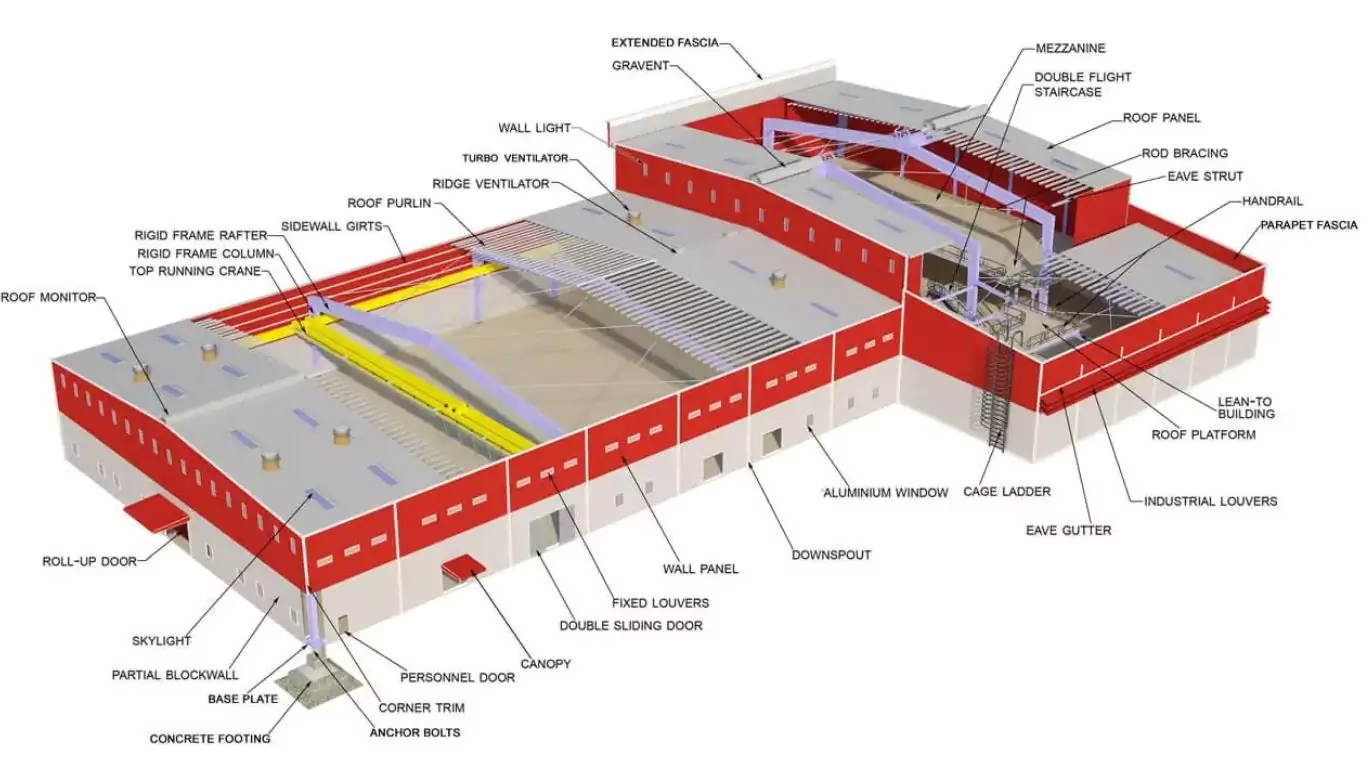
Why Pre-Engineered Building Components Are the Future of Construction
[ad_1]
Construction’s always evolving, right? Were constantly figuring out new technologies and methods and stuff to make building more efficient, green and cost-friendly. Pre-fab building parts stand out as one of the biggest breakthroughs in a while. In this article, we will explore the compelling reasons behind why pre-engineered building components are poised to shape the future of the construction industry and redefine its landscape.
Understanding Pre-Engineered Building Components
Pre-engineered building components, commonly known as prefabricated or modular building elements, embody structural elements crafted off-site and later assembled on the construction site. These components encompass a diverse range of parts, ranging from walls, floors, and roofs to even entire building modules.
The Manufacturing Process
Producing pre-engineered building components involves employing advanced technology and machinery to craft high-quality, precise elements. These components are typically crafted from steel, with meticulous attention given to precise cutting, welding, and painting to adhere to the stringent design requirements. After their fabrication, these components are transported to the construction site, where they are skillfully assembled using cranes and heavy equipment. This method markedly surpasses the time and efficiency constraints of traditional construction approaches, which involve on-site construction of each individual component.
Why Pre-Engineered Building Components Are the Future of Construction
- Enhanced Efficiency and Cost-Effectiveness: Pre-engineered building components stand out due to their remarkable efficiency and cost-effectiveness. The manufacturing process is meticulously streamlined, leading to minimal waste and an accelerated production pace. This translates to reduced costs for manufacturers and construction companies. Moreover, on-site assembly is notably faster than traditional methods, resulting in lower labor costs and shorter project timelines, thus allowing for quicker occupancy and faster returns on investment.
- Improved Quality and Consistency: The application of advanced technology and machinery in the manufacturing process guarantees that pre-engineered building components consistently adhere to high-quality standards and precise dimensions and specifications. This precision fosters an error-free and accurate construction process, leading to fewer delays. Furthermore, as these components are produced within controlled environments, they remain unaffected by adverse weather conditions or external factors, contributing to a more resilient and enduring final product.
- Sustainable Construction Solutions: In an era where sustainability takes center stage, pre-engineered building components offer an environmentally friendly solution. The manufacturing process of these components results in minimal waste generation and a more conservative use of resources compared to traditional construction methods. What’s more, these elements have the added advantage of easy disassembly, allowing them to be repurposed in other projects. This practice greatly reduces the volume of construction waste headed for landfills. This inherent sustainability factor positions pre-engineered building components not just as eco-friendly but also as a cost-effective choice for renovation and expansion projects.
Examples of Pre-Engineered Building Components in Action
Modular Construction: Modular construction serves as an excellent illustration of pre-engineered building components in practice. In this strategy, complete building modules are fabricated off-site and later transported to the construction location for assembly. This method has proven highly effective across various projects, including residential homes, commercial structures, and hotels. Its widespread adoption owes much to its exceptional efficiency and cost-effectiveness.
Prefabricated Walls and Floors: Pre-engineered building components find extensive use in the construction of walls and floors. These elements are skillfully manufactured off-site and subsequently assembled on the construction site, resulting in a substantial reduction in both time and labor demands when compared to traditional construction techniques. They rock for commercial and industrial buildings where efficiency matters a ton and their magic is they can be adapted to meet different design needs. So they end up being super versatile for all kinds of projects.
The Future of Construction Is Here
Pre-engineered pieces are leading a straight-up revolution in construction. They give builders a more streamlined, affordable, sustainable choice. As tech marches on, expect even more killer apps for pre-fab components down the line.
How to Incorporate Pre-Engineered Building Components into Your Projects
Want to use pre-engineered parts in your projects? Few key steps:
- Research and Education: Commence by researching and educating yourself on the various types of pre-engineered building components available and their applications in construction projects. This knowledge will empower you to select the components most suited to your specific project and budget.
- Partner with a Reputable Manufacturer:
Effective collaboration with a reputable manufacturer plays a pivotal role in ensuring the success of your project. It’s crucial to identify a company with a well-established track record of crafting high-quality pre-engineered building components and consistently delivering them within budget and on schedule. - Collaborate with Architects and Engineers: Collaboration with architects and engineers is essential to ensure the seamless integration of pre-engineered building components into your project’s design. This collaborative effort will help preempt potential issues and delays during the construction process.
So in summary, using pre-made parts for buildings is clearly the way of the future for construction. It gives you faster, cheaper, greener options compared to starting from scratch. If you work these pre-fab pieces into your building plans you can save a bunch on time and money, and not trash the environment as much either. And with how fast technology keeps moving forward, who knows what other cool ways we’ll see these pre-made building blocks used down the road and the possibilities are really exciting.
[ad_2]
Source link




